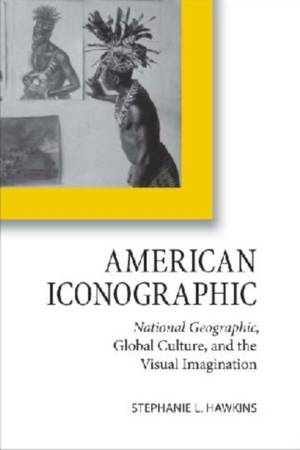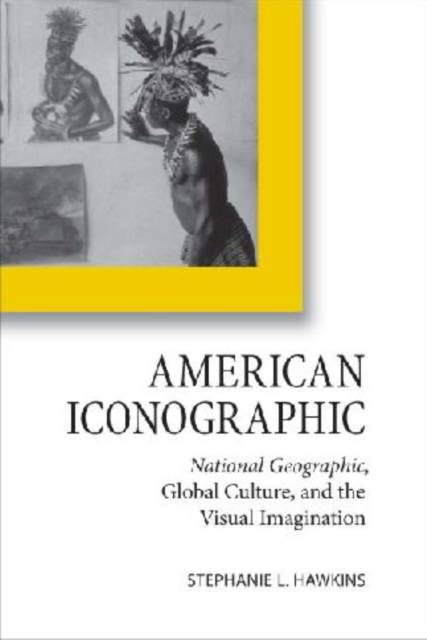
- Afhalen na 1 uur in een winkel met voorraad
- Gratis thuislevering in België vanaf € 30
- Ruim aanbod met 7 miljoen producten
- Afhalen na 1 uur in een winkel met voorraad
- Gratis thuislevering in België vanaf € 30
- Ruim aanbod met 7 miljoen producten
American Iconographic
National Geographic, Global Culture, and the Visual Imagination
Stephanie L HawkinsOmschrijving
In an era before affordable travel, National Geographic not only served as the first glimpse of countless other worlds for its readers, but it helped them confront sweeping historical change. There was a time when its cover, with the unmistakable yellow frame, seemed to be on every coffee table, in every waiting room. In American Iconographic, Stephanie L. Hawkins traces National Geographic's rise to cultural prominence, from its first publication of nude photographs in 1896 to the 1950s, when the magazine's trademark visual and textual motifs found their way into cartoon caricature, popular novels, and film trading on the "romance" of the magazine's distinctive visual fare.
National Geographic transformed local color into global culture through its production and circulation of readily identifiable cultural icons. The adventurer-photographer, the exotic woman of color, and the intrepid explorer were part of the magazine's "institutional aesthetic," a visual and textual repertoire that drew upon popular nineteenth-century literary and cultural traditions. This aesthetic encouraged readers to identify themselves as members not only in an elite society but, paradoxically, as both Americans and global citizens. More than a window on the world, National Geographic presented a window on American cultural attitudes and drew forth a variety of complex responses to social and historical changes brought about by immigration, the Great Depression, and world war.
Drawing on the National Geographic Society's archive of readers' letters and its founders' correspondence, Hawkins reveals how the magazine's participation in the "culture industry" was not so straightforward as scholars have assumed. Letters from the magazine's earliest readers offer an important intervention in this narrative of passive spectatorship, revealing how readers resisted and revised National Geographic's authority. Its photographs and articles celebrated American self-reliance and imperialist expansion abroad, but its readers were highly aware of these representational strategies, and alert to inconsistencies between the magazine's editorial vision and its photographs and text. Hawkins also illustrates how the magazine actually encouraged readers to question Western values and identify with those beyond the nation's borders. Chapters devoted to the magazine's practice of photographing its photographers on assignment and to its genre of husband-wife adventurers reveal a more enlightened National Geographic invested in a cosmopolitan vision of a global human family.
A fascinating narrative of how a cultural institution can influence and embody public attitudes, this book is the definitive account of an iconic magazine's unique place in the American imagination.
Specificaties
Betrokkenen
- Auteur(s):
- Uitgeverij:
Inhoud
- Aantal bladzijden:
- 264
- Taal:
- Engels
- Reeks:
Eigenschappen
- Productcode (EAN):
- 9780813929668
- Verschijningsdatum:
- 3/06/2010
- Uitvoering:
- Paperback
- Formaat:
- Trade paperback (VS)
- Afmetingen:
- 150 mm x 226 mm
- Gewicht:
- 362 g

Alleen bij Standaard Boekhandel
Beoordelingen
We publiceren alleen reviews die voldoen aan de voorwaarden voor reviews. Bekijk onze voorwaarden voor reviews.











